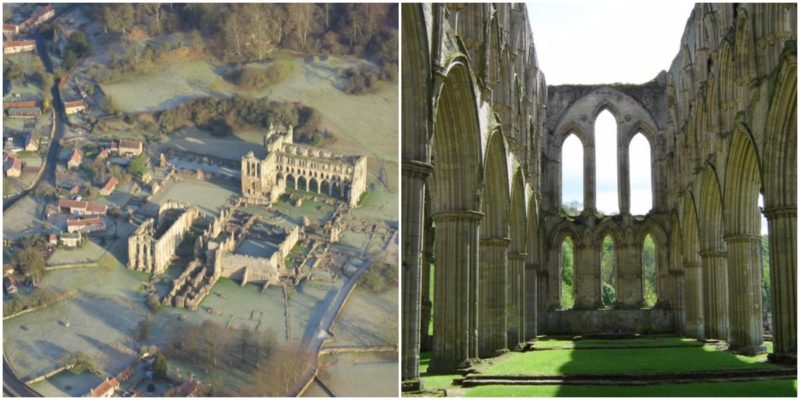The remains of Rievaulx Abbey are located in the small village of Rievaulx, near the town of Helmsley in North Yorkshire, England.
The village is situated in what was the inner court of the abbey near the River Rye. Its name comes from Rye (the river) and Norman-French val or valle (valley). The site is part of the North York Moors National Park.
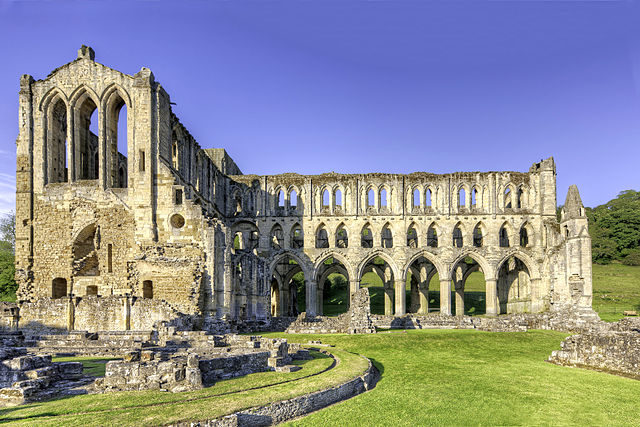
The abbey was a Cistercian abbey headed by the Abbot of Rievaulx. The Cistercian monastic community was founded in 1131 by Walter L’Espec in North Yorkshire.
Scroll down for footage
The Abbots of Rieavalux were some of the most powerful religious leaders in northern England and Rievaulx Abbey was one of the richest abbeys in the whole country. In 1538, the monastery was closed as part of the Dissolution of the Monasteries by Henry VIII of England. That year, monastic life ended and the abbey was abandoned.
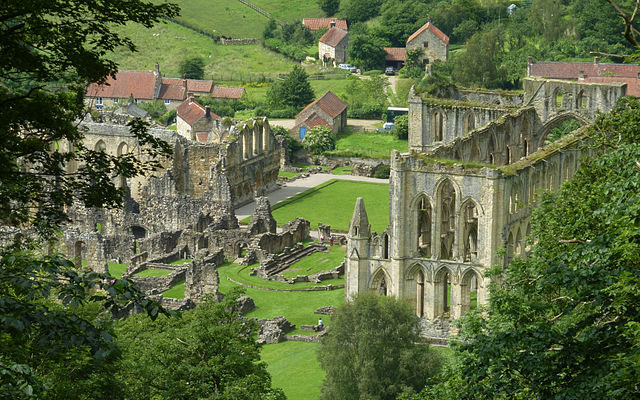
Rievaulx Abbey was one of the first Cistercian abbeys to be built in England. The abbey was founded in 1132 by twelve monks from Clairvaux Abbey, France. The foundation of the abbey was part of their mission for colonization of Scotland and northern England. Construction was started by St. William I, the first abbot of the monastery, in the late 1130s. The buildings at the site were expanded during the 1150s by Abbot Aelred. At its peak, it was one of the most notable Cistercian abbeys in Yorkshire, surpassed only in fame by Fountains Abbey.
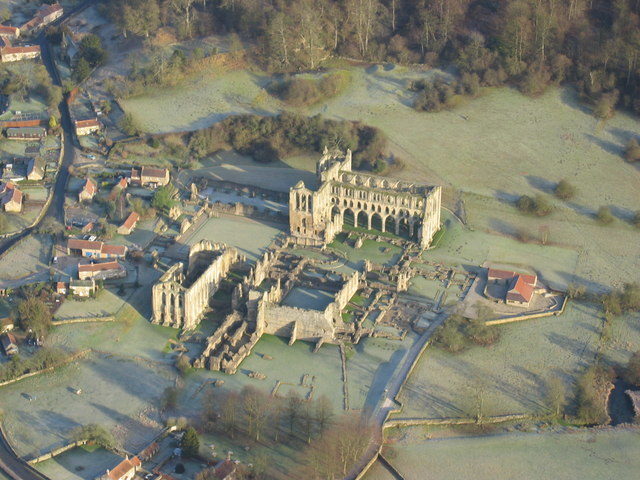
The isolated location of the monastery was perfect for the Cistercians, who preferred a little contact with the outside world. They embraced a removed and tranquil way of life, full of prayers and strict everyday duties. The patron of the community, Walter L’Espec, also founded Wardon Abbey in Bedfordshire, another Cistercian monastic community.
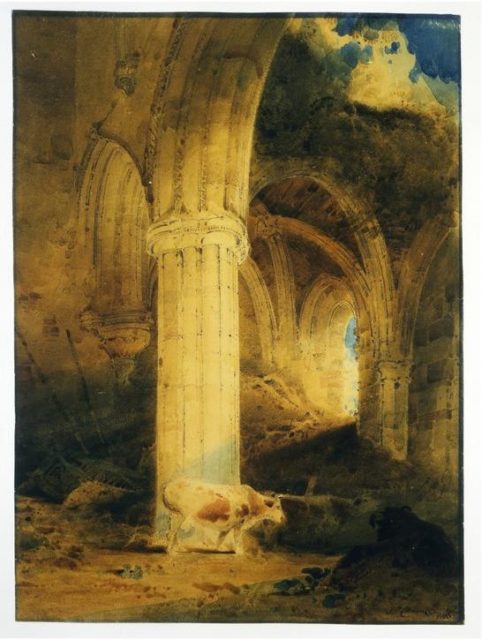
The abbey is located in a wooded part of the River Rye valley and surrounded by hills. The monks had to do some ingenious engineering work to have enough flat land build on. They moved part of the river several feet to the west. During the 12th century, the river’s course was altered two more times. The old course is still visible in the abbey’s land. Their innovative thinking can be also found in other aspects of their community.
Over the years, they created several profitable businesses. Some of the many works that they did in the abbey and its surrounding areas were mining lead and iron, rearing sheep, and selling wool to markets across Europe. The abbey soon became one of the wealthiest in England. It had 140 monks and many more lay brothers. It received many gifts of land and its property was estimated to span approximately 6,000 acres. A few daughter houses were founded in England and Scotland too.
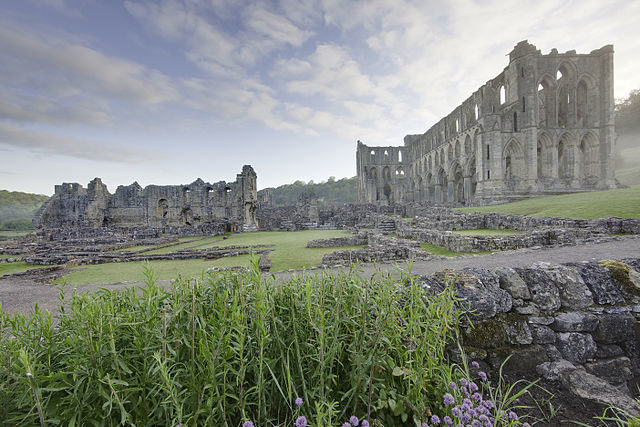
The slow decline of the monastery began at the end of the 13th century. The abbey fell into debt because of its many building projects. The abbey’s wool business also suffered when their sheep were hit by an epidemic of sheep scab. At the beginning of the 14th century, raiders from Scotland damaged the abbey and in the mid-14th century, many people at the abbey were killed by the Black Death.
The reduction of the population made it very difficult to recruit new lay brothers, whose labor was needed to help run the abbey. Because of these pressures, the abbey decided to lease some of its land. By 1381, only 14 choir monks, 3 lay brothers, and the abbot remained. Some of the buildings were reduced in size too.
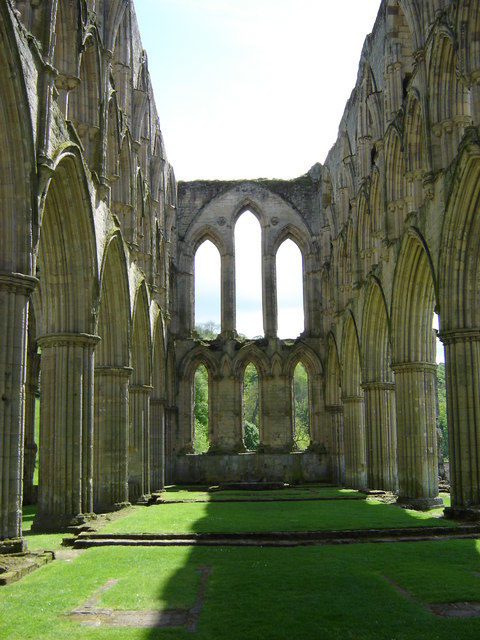
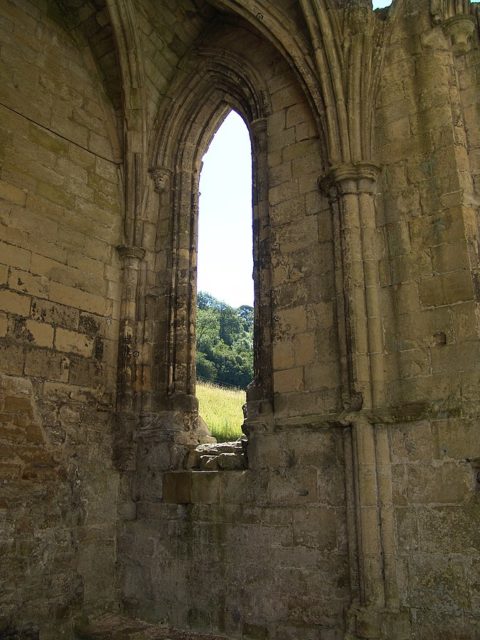
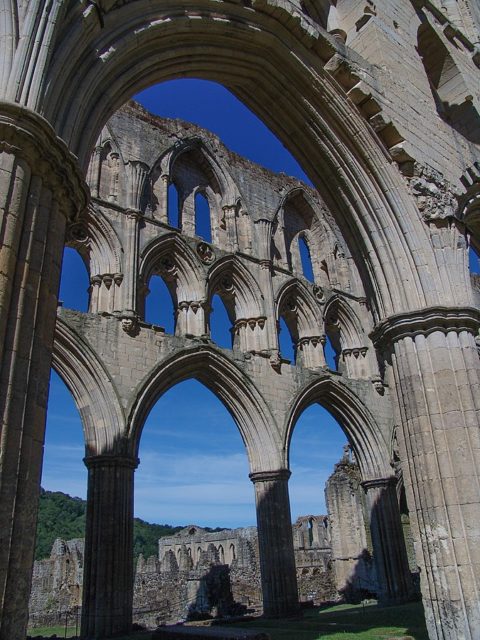
During the 15th century, the strict Cisterian practices laid down by Saint Benedict changed to allow a less austere lifestyle. The monks were given more private living space and they were allowed to eat meat.
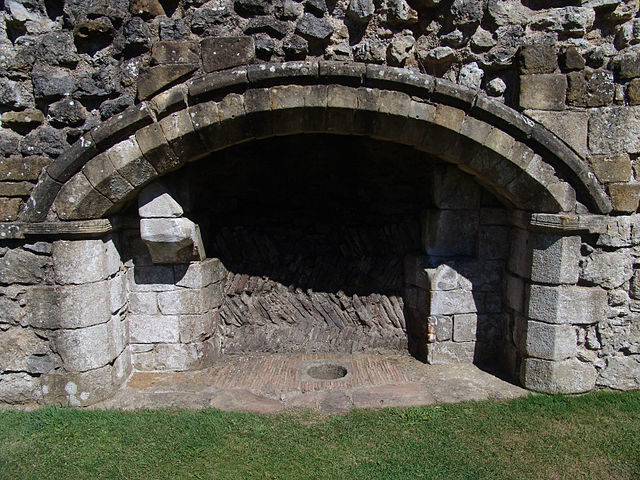
The abbey was closed in 1538 by the order of Henry VIII of England, who dissolved many monasteries across the country. At the time of its closing, the wealth of Rievaulx Abbey was clearly evident. The monastery had 72 buildings in which lived and worked an abbot and 21 monks. It had also 102 servants with annual salaries. The abbey owned an early example of a blast furnace at Laskill created by the monks, which was used for producing cast iron with the same efficiency as a modern-day blast furnace.
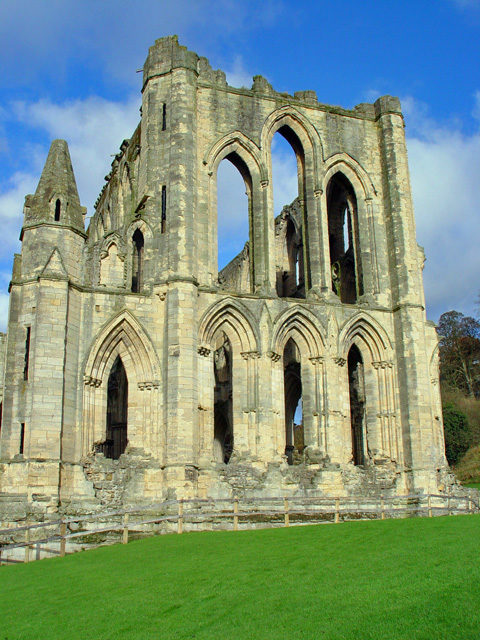
The buildings were made uninhabitable and all of the valuables were removed. Henry sold the property to one of his loyal men, the Earl of Rutland. He continued the monks’ tradition of iron-smelting. A charcoal-fired blast furnace was made and in the inner court of the abbey, new structures were erected and thus, Rievaulx village was born.
The production ended in 1647 during the English Civil War. Later, the abbey passed to the Duncombe family. In the 1750s, Thomas Duncombe III added a terrace with two Grecian-style temples on his property.
Over the centuries, many artists, poets, and painters were inspired of the majestic beauty of the abbey. Today the site is a tourist attraction and a monument of national importance. Rievaulx Abbey is a precious treasure hidden deep in the remote River Rye Valley.
